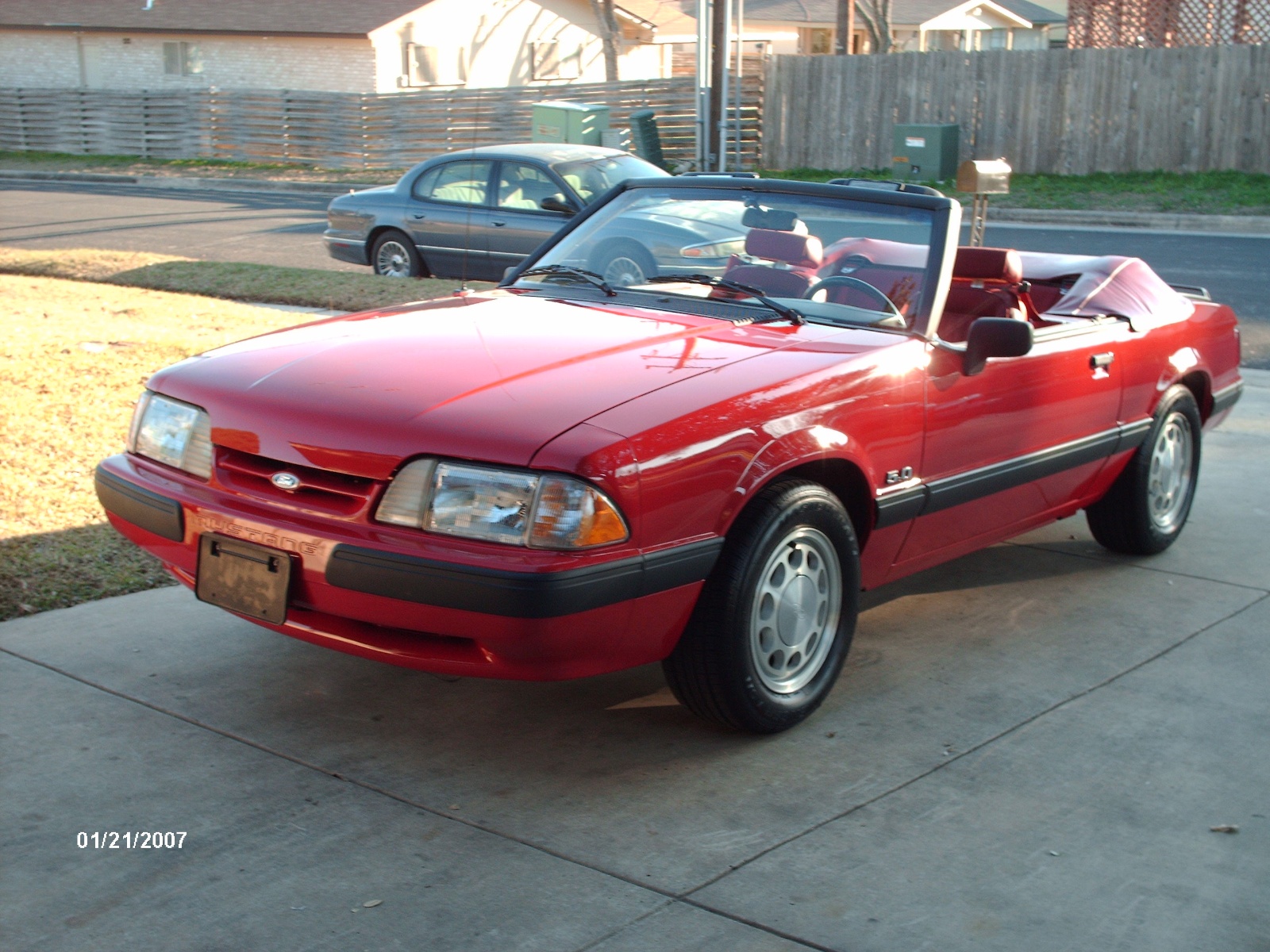1990 Ford Mustang-American muscle car
The Mustang was introduced at the 1965 New York World's Fair, Mustang Mania instantly swept the country, and a new automotive market segment was created - the 2+2 or better known as the 'ponycar.' Though its mechanical underpinnings descended from the Falcon, the Mustang was completely different. It was a compact, tight, clean package weighing in at a modest 2,550 pounds - a departure from the ever-enlarging American cars of the day. The classic long-hood short-rear-deck combined with a forward-leaning grille, elegant blade bumpers, sculptured body sides, fully exposed wheel openings and restrained use of bright trim gave the car a unique look that belied its affordability. Its looks were backed up with power, providing three optional V8 engines with up to 271 horsepower. Other options included automatic transmission, power steering and brakes, styled chrome wheels and air conditioning. Not surprisingly, the entry-level modes were a minority of the production.
1990 Ford Mustang- White racing car
To say that the first Mustang was a success is an understatement. Following the introduction, the Mustang was on the cover of both Time and Newsweek. A week before introduction, Ford ran ads with the air times for the first television commercials, which all three networks broadcasted simultaneously. Mustang was selected as the Official Pace Car for the 1964 Indianapolis 500, and more than 22,000 orders were taken the first day. By its first anniversary, over 418,000 Mustangs had been sold, breaking the all-time record for first year sales of a new nameplate.
The original platform was used, with numerous modifications, up to 1973. The Pinto-based Mustang II was built from 1974 until 1978. A new fox body platform began in 1979 and was largely unchanged through 1993. In 1994 the SN-95, a modified version of the Fox body, debuted and was produced until 2004. The 2005 Mustang is built on the first entirely new platform in 25 years.
1990 Ford Mustang Convertible
Until 1967, Mustang had this new market all to itself. For 1965 a new 2+2 Fastback model added as was the GT Equipment Group. Both performance and aesthetically minded, this group included front disk brakes; grille-mounted fog lights, 5-gauge instrumentation, GT stripes and badges and special dual 'trumpet' exhaust outlets. 1966 brought a huge shot in the arm to the ponycar moniker - the first Shelby GT 350. Built on the 2+2 Fastback by famed racer/car builder Carroll Shelby, these cars featured race-tuned engines and suspensions. By mid-1966, Mustang passed the one-million sales mark.


